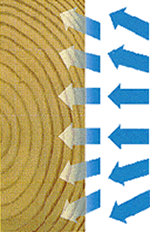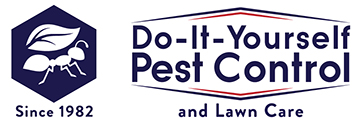
Timbor Professional Insecticide
Starting at $18.95
BUNDLE & SAVE 5%!
Product Information
Tim-bor Professional
Tim-bor Professional's active ingredient, 98% Disodium Octaborate Tetrahydrate has no known insect resistance. It may used as as a liquid, foam or dust, and provides long term protection against insects (drywood and subterranean termites, wood boring beetles, carpenter ants and decaying fungi.
How Does Timbor Work ?
 Tim-bor is a wood preservative that stops and prevents rot and insect attacks. It can be sprayed or brushed onto the surface of lumber, timbers, OSB or plywood. The preservative becomes a part of the wood as it penetrates deep into the wood through a process called diffusion. By diffusing deep into wood fibers, Tim-bor lasts for as long as wood is kept away from flowing water. That means that Timbor has controlling powers that last for a very long time.
Tim-bor is a wood preservative that stops and prevents rot and insect attacks. It can be sprayed or brushed onto the surface of lumber, timbers, OSB or plywood. The preservative becomes a part of the wood as it penetrates deep into the wood through a process called diffusion. By diffusing deep into wood fibers, Tim-bor lasts for as long as wood is kept away from flowing water. That means that Timbor has controlling powers that last for a very long time.
Used For Wood Destroying Insects & Decay Fungi
Timbor is not only an insecticide that provides protection and treatment of lumber from wood destroying insects, but also works against fungal decay. This fungal decay includes, brown rot, white rot and wet rots. Timbor is a water soluble, inorganic borate salt with insecticidal properties effective against wood-destroying organisms, including, Subterranean termites, Dry wood termites, Damp wood termites, Carpenter ants, PowderPost Beetles (False PowderPost Beetles, Furniture and Deathwatch Beetles, Old House Borers, Longhorn Beetles, and Ambrosia Beetles.). Timbor does not treat mold or prevent mold from growing.
Types of Applications
Tim-bor can be applied as a solution, foam or dust for wood treatment against wood destroying organisms and as a solution or dust for general insect control. Tim-bor, applied as a solution or foam to wood, will penetrate into the wood to various depths dependent upon the moisture in the wood and the wood species. The active ingredient in Tim-bor does not break down. As normal moisture changes occur in the wood, Tim-bor is always available to be drawn deeper into the wood over time, providing long lasting protection. The mode of action for Timbor is that of a slow acting stomach poison to insects, and a contact poison to decay fungi. As Wood-destroying insects or their larvae feed on, tunnel in and/or digest wood, they accumulate the active ingredient of Timbor into their systems
Timbor - Solution For Long-Term Protection
Timbor is a small investment for your home and key in preventing fungus and termite infestations with one or several applications. Treat your home to Timbor, and you'll be treating yourself to a longer-lasting cure for insect and decay problems.
Timbor- Features
- Timbor is wood preservative that works as an insecticide and fungicide.
- Timbor is a borate compound(Disodium Octaborate Tetrahydrate ). Borate compounds are derived from mineral deposits that contain the element Boron.
- Timbor is both an insecticide and a fungicide. Insects are exposed to the active ingredient by eating treated wood or by ingestion while grooming. Borates are a contact toxicant to fungi. The borates prevent metabolism of food by insects and fungi causing death.
- Tim-bor can be applied to the surface of bare wood. Tim-bor can be foamed using equipment designed for foaming applications It can also be applied as a dust into void attic and wall void areas for labeled insect control.
- Timbor mixes with water to make a 10% solution or a 15% solution; use 1lb or 1.5 lb per gallon of water.
- Won't stain or discolor wood surfaces.
- Virtually odorless
- Will not corrode screws, nails and other components used in construction.
- Boracare ( Another borate ) allows a deeper absorbion and penetration in wood. If you have powderpost beetles, particulary in furniture, Boracare may be a preferred product. Timbor only absorbs to an 1/4 of an inch.
| Packaging | 1.5 lb or 25 lbs |
|---|---|
| Product Label | Timbor Label |
| SDS | Timbor SDS |
| More PDF's | N/A |
| Target Pest | General Insects and Tim-bor InsecticideGeneral insects such as cockroaches, ants, crickets, etc. will ingest Timbor through their normal preening habits after contacting deposits. The accumulation of the boron into their systems acts to poison the insect. When used as a dust or as a crack and crevice solution, Timbor is not repellent to general pests. Since Timbor is slow-acting, termites that have fed on treated wood can accumulate the active ingredient and still move among other individuals in the colony. The transfer of food from workers to nymphs, soldiers and reproductives, will also transfer the ingested Tim-bor. Affected individuals also exhibit behavioral changes, becoming sluggish, stop feeding and become moribund. Others in the colony will avoid these individuals as well as areas where these individuals have died. The Tim-bor treated wood is not the first choice for feeding; therefore foraging termites avoid Tim-bor treated wood. In addition, the Timbor powder used as a dust in wall voids and injected into galleries is toxic to termites. Tim-bor and Powderpost Beetle LarvaeTim-bor treated wood also deters wood destroying Beetle larvae. Eggs deposited on the surface of treated wood by beetles will have a reduced hatch rate. Larvae that may hatch from eggs will soon die after attempting to eat into Tim-bor treated wood. In infested wood, the larvae will die from ingesting Tim-bor treated wood as they tunnel toward the surface of the wood to pupate. Depending on the life cycle of the beetle, type of beetle, and seasonality of treatment, adult beetles may emerge but will not re infest the wood. Tim-bor and Carpenter AntsCarpenter Ants do not consume wood, but they can cause substantial and rapid damage by excavating cavities in wood for nesting. Tim-bor treated wood is very unpalatable and is not excavated by carpenter ants. Treated wood with Tim-bor alone may not prevent or eliminate a carpenter ant infestation since the ants can penetrate construction features and avoid chewing treated wood. However, Tim-bor powder used as a dust in nesting sites, in wood and in wall voids and around conduit and plumbing will control these pests. The Tim-bor powder adheres to the carpenter ant's body and is ingested as the insect attempts to clean the powder off. |
| Active Ingredient (s) | Disodium Octaborate Tetrahydrate (Borate) 98.0 |
| For Use : | Tim-bor Remedial & Preventative TreatmentsBasement or crawl spaceSpray Tim-bor solution on all bare wood accessible in the flooring and subfloor. This application will control an infestation even when certain parts of a gallery are not directly sprayed. In addition, steps must be taken to correct moisture problems (leaks, etc.) that may have led to and sustained the infestation. AtticsSpray Tim-bor solutions to all accessible wood: rafters, trusses, top-plates, ceiling joists, plywood, particle board, OSB etc. Accessible areas with known infestations should be drilled and injected depending on the type of infestation. This has been a particularly effective technique in spot treating for control of drywood termites. Exterior WoodTim-bor can be applied to bare siding, trim or logs. Applications can be made by spray or pressure injection techniques. Painted or sealed wood can be treated by pressure injection with this solution, or the sealing coat can be removed prior to application. Following treatment, the exterior wood should be sealed to protect Tim-bor from diffusing out. Wood should be completely dry (at least 48 hours) before a sealing coat (paint, varnish or waterproofing seal) can be applied. When properly applied, Tim-bor will not interfere with application of a deck treatment. Wood DecksTim-bor can be used to treat wood decks. Prepare the deck by removing any dirt, debris or sealant that will interfere with the application and absorption of Tim-bor. After the deck has dried (dry to the touch, no standing puddles), 2 applications of 10% or 1 application of 15% Tim-bor can then be applied to the wood. Protect any surrounding plants and ornamentals from accidental contact with the solution. Following treatment, the deck should be sealed with a water-repellent preservative product to protect the Tim-bor from diffusing out. Wood should be allowed to dry before a sealing coat can be applied. |
| Yield | 1.5 pounds of Timbor will treat up to 200 sq. ft of untreated wood. Refer to product label for complete instructions. |
| Mixture|Application | 1 lb = 10% solution, 1.5 lb= 15% solution |
| Application | Mixing instructions
Wood application procedures
Pressure injection of Tim-bor
|
| Shipping Restrictions | CT, NY |
| More Instructions | Trouble Shooting / Hints
Notes for Powderpost Beetles and Timbor Application
|







